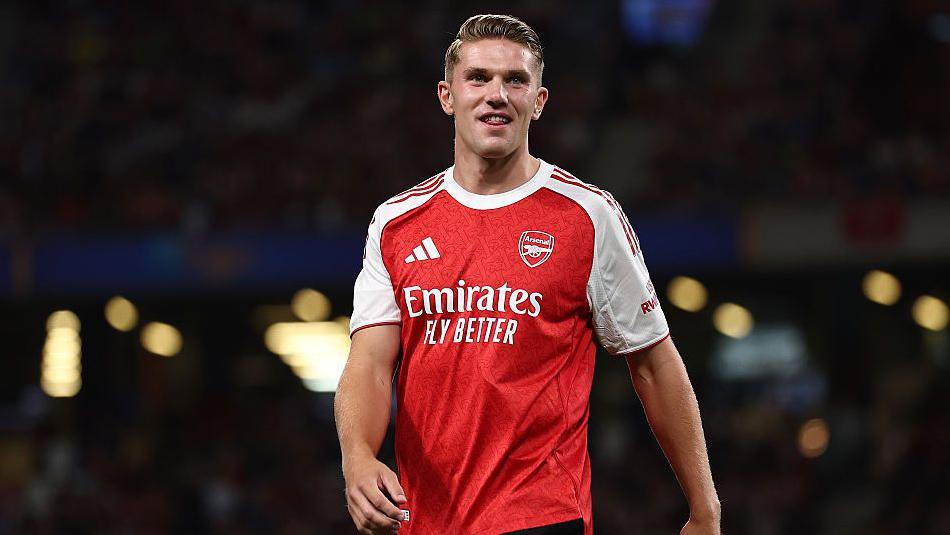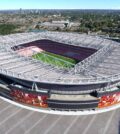- Arsenal keep close eye on Lille talent Bouaddi
- Confirmed line-ups: Aston Villa vs Arsenal – White starts, Saliba ruled out
- Arsenal monitor Marcus Rashford ahead of future move
- Arsenal told Jurrien Timber is ‘best’ fullback in the PL
- Arsenal eye January move for Villarreal’s Alberto Moleiro
- Predicted Arsenal line-up against Aston Villa
- Arsenal handed major lift in Rodrygo chase
- Pundit heaps praise on Arsenal star Noni Madueke
- Arsenal make contact to sign Juventus star Kenan Yildiz
- Arsenal eye Cardiff’s Dylan Lawlor as defensive option
Arsenal’s Shift from Contenders to Finishers
Arsenal enter the 2025–26 season as a very different side to the one that left the pitch last spring. Three consecutive second-place finishes created an uncomfortable familiarity, yet the approach this time feels transformed. The club built a squad that fixed last season’s weak spots in continuity, goals at the Emirates and reliance on key players’ fitness.
From recruitment to tactical adjustments, the structure now reflects a team designed to complete the job.
Rebuilding Output from Key Areas
Availability of core players remained inconsistent last season. Eight Arsenal players currently carry a transfer valuation of €60 million or more, yet none featured in ninety per cent of Premier League minutes. William Saliba led with 88.9 per cent, followed by Declan Rice at 82.6 per cent.
The rest of that core group failed to maintain continuity. Ødegaard registered 68 per cent, Saka just above 50 per cent. Those numbers left too many rotations in central and wide areas, which disrupted ball progression and reduced cohesion in pressure phases.
This season begins with a physically fit group. The medical load is more evenly distributed, and rotation options exist for every role. The new structure permits less dependence on individual peaks and accommodates fluctuation in performance across the calendar.
Reinforcement of Critical Positions
Recruitment focused on stability in defensive and midfield zones, and control in attacking transitions. Martín Zubimendi arrived to provide a solution in holding midfield, easing Rice’s tactical burden. Viktor Gyökeres offers a pure centre-forward profile that had been missing across prior seasons.
Madueke widens the pitch with direct play, and Mosquera adds coverage across defensive lines. Kepa’s role balances squad dynamics and matchday selection in goalkeeping terms. Each transfer addressed specific functional limitations.
This new version of Arsenal plays with better occupation of zones. Central overloads are easier to construct. Gyökeres’ positioning draws defensive attention that previously left Arsenal stagnant against compact mid-blocks. Arsenal’s attacking players receive with more time and reduced congestion. The resulting tempo shift enables sharper combinations, particularly in matches where their opponent sits off and challenges them to find solutions in tight space.
Old Trafford Showed What Changed
Arsenal opened the season with a 1–0 win at Old Trafford. Gyökeres started as the central striker and scored the only goal. The defensive line held shape without retreating under pressure. Arsenal completed more passes through central areas than in any away match during the previous season. They attempted fewer long balls and produced higher shot quality than in the last five meetings with Manchester United.
While that performance raised expectations, it was Arsenal’s wins over Newcastle and West Ham that really shifted the mood. Both teams had beaten Arsenal last season. This shows Arsenal’s change in mentality and the ability to grind out results when the game is not going their way.
Bookmakers in the UK, such as Bet365, have adjusted the Premier League title odds significantly, with Arsenal emerging as slight favourites heading into October. Analysts note that this month could prove crucial in the title race, as Liverpool face a challenging fixture list before the final international break of the year. For those tracking the market movements, Bet365 offers a bonus for new sign-ups, and the full bonus terms and conditions can be found on Oddspedia. With so much at stake, fans and bettors alike will be closely watching every result in the coming weeks.
Restoring Authority at Home
Arsenal’s home record in 2024–25 produced 39 points, which ranked below all title contenders apart from Newcastle. Eight matches at the Emirates ended without victory. The goalscoring total reached only thirty-five, lower than Brentford and equal to seventeenth-placed Tottenham. Their attacking return dropped by 13 goals compared to the previous campaign.
A key pattern changed. Arsenal registered fewer shots of high expected value. Their count of “great shots” fell from 46 to 36 year-on-year. Shot location quality declined, and conversion in decisive areas suffered. Arsenal no longer dictated matches in their own ground through relentless offensive rhythm.
Repetition in training now targets final third efficiency. Arsenal’s patterns use short passing sequences and precise third-man runs. The team adjusts its approach to counter the drop in final zone penetration. The drop-off in shot volume has reversed already, and the match tempo at the Emirates shows earlier acceleration phases.
Functional Output Replaces Style Dependency
The changes reflect a shift from aesthetic control to measurable output. Arsenal’s ball retention last season masked the inability to generate volume in key moments. The conversion problem started from a predictable attack structure and insufficient variation in movement across the box.
This season introduces more flexibility. Wide players operate from inverted lanes, and the striker remains central, holding defenders in position. Ødegaard and Zubimendi construct advances in shorter phases, reducing risk while increasing shot access. Arsenal now build towards a higher-quality final action without sacrificing ball retention in deep zones. That difference eliminates the overreliance on speculative chances and reactive pressing.
Technical Consistency Redefines Ceilings
Arsenal filled the structural gaps that weakened them last season, and the result is a team that sustains rhythm across all competitions. Fitness levels support consistent selection, and recruitment introduced players who meet the tactical requirements without forcing compromise. Each substitution follows a pattern that keeps the system balanced, and positional switches unfold with control rather than improvisation.
The setup establishes consistency across matches, and it eliminates the reliance on isolated performances. Arsenal build pressure with the same structure every week, and they convert that pressure through volume. The combination of tactical control and regular attacking access lifts the standard in every phase.





